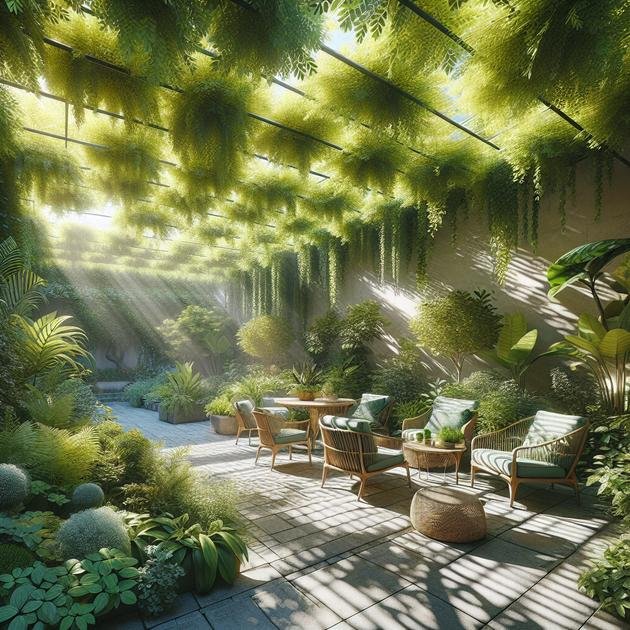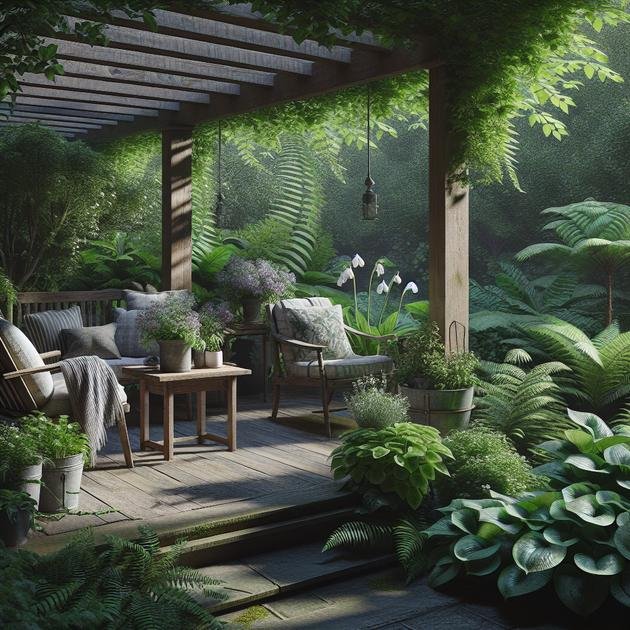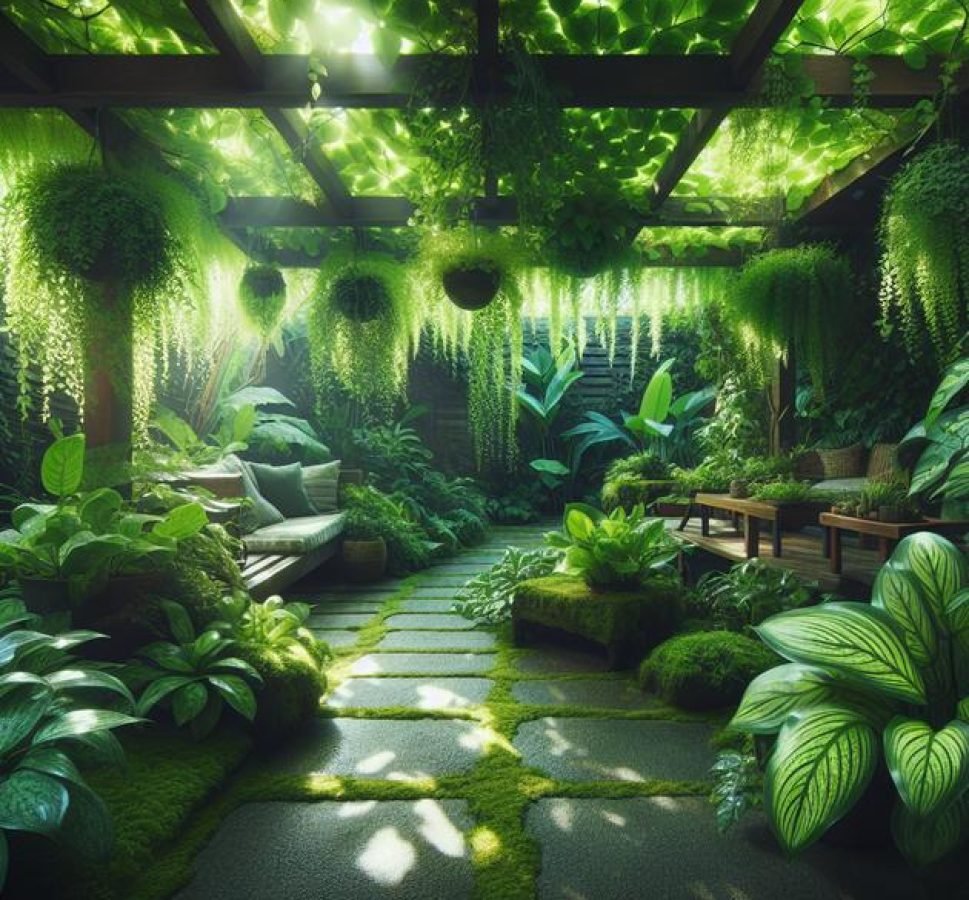Shade garden plants thrive in low-light conditions, offering diverse textures and colors that transform shaded outdoor areas into vibrant, low-maintenance spaces suited for cooling, soil improvement, and attracting beneficial wildlife.
Have you ever wondered which plants actually thrive in low light? Shade garden plants can transform those dim corners of your outdoor area into lush, inviting spaces. Let’s explore some great options and tips to get your shade garden growing beautifully.
why choose shade garden plants for your outdoor space
Choosing shade garden plants for your outdoor space brings unique benefits, especially if parts of your garden receive limited sunlight. These plants thrive in low light, allowing you to transform darker corners into lush, vibrant areas. Shade plants are perfect for creating cool, relaxing retreats that contrast well with sun-loving species.
In addition to aesthetics, shade plants can improve soil health and reduce erosion under tree canopies. Many are hardy and low-maintenance, which means less watering and care compared to other plants. They also attract pollinators and beneficial insects, enhancing your garden’s ecosystem.
Environmental and practical advantages
Shade garden plants help lower temperatures around your home, providing natural cooling during warm months. Their dense foliage can create privacy screens and soften hard landscape features. Plus, shade gardens reduce water evaporation, making them an eco-friendly choice, especially in regions with less rainfall.
Selecting the right shade plants can maximize these advantages. Consider factors like soil type, moisture, and overall garden design to create a thriving shaded area filled with beautiful, resilient plants.
top perennial shade garden plants to consider
Perennial shade garden plants are an excellent choice for adding lasting beauty to your shaded areas. These plants return year after year, providing reliable color and texture with minimal replanting effort. Some popular perennials for shade include hostas, known for their large, attractive leaves, and ferns, which add a delicate, feathery texture to the garden.
Astilbes offer vibrant plume-like flowers that contrast beautifully with deep green foliage. Another favorite is the bleeding heart, with its unique, heart-shaped blossoms that dangle gracefully from arching stems.
Choosing the right perennials for your shade garden
When selecting perennials, consider your climate, soil moisture, and light levels. Many shade perennials prefer moist, well-draining soil and protection from harsh afternoon sun. Mixing textures and heights, such as pairing tall astilbes with low-growing hostas, creates an appealing layered look.
Perennials like heuchera (coral bells) bring colorful foliage in reds and purples, making your shaded garden vibrant even without abundant flowers. Incorporating different bloom times also keeps your shade garden interesting throughout the growing season.
annual plants that thrive in shade

Annual plants that thrive in shade offer vibrant colors and seasonal interest to darker garden spots. These plants complete their life cycle in one growing season, providing flexibility for gardeners to change the look of their shade garden each year. Popular shade-loving annuals include impatiens, known for their bright blooms and ability to flourish in low light.
Begonias are another favorite, offering striking foliage colors and delicate flowers that brighten shady areas. Caladiums add an exotic touch with their bold, variegated leaves in shades of red, pink, and white.
Tips for growing shade-loving annuals
Most shade annuals prefer well-draining, moist soil and protection from direct afternoon sun. Regular watering is essential, but avoid waterlogging. Annuals can be used in containers, borders, or as fillers among perennials to add diverse textures and colors.
Planting a mix of annuals with different bloom times keeps your shaded garden lively throughout the growing season. Using mulch helps retain soil moisture, which is especially beneficial for shade plants. Experimenting with combinations like impatiens and begonias can create a stunning, colorful display even in low light conditions.
how to prepare your garden soil for shade plants
Preparing your garden soil properly is crucial for the success of shade garden plants. These plants often require soil that retains moisture without becoming waterlogged. Start by testing your soil’s pH and texture to understand its current condition.
Improving soil structure
Incorporate organic matter such as compost or well-rotted leaf mold to improve soil drainage and nutrient content. This also encourages beneficial microbes, which help plants absorb nutrients effectively. For heavy clay soils, adding coarse sand or fine bark mulch can enhance drainage.
Optimizing soil nutrients
Shade plants typically prefer slightly acidic to neutral soil, so adjust pH accordingly using lime for acidic soil or sulfur for alkaline soil. Use a balanced, slow-release fertilizer with micronutrients to provide steady nourishment. Avoid over-fertilizing, which can harm shade-loving plants.
Maintaining moisture levels
Apply mulch to conserve soil moisture and regulate temperature, especially important in shaded areas that can stay damp or dry unevenly. Regularly check moisture levels to prevent drying out or soggy conditions. Well-prepared soil supports strong root growth and healthier plants.
best shade-tolerant ground covers and ferns
Ground covers and ferns are ideal for filling shady spaces with texture and greenery. Shade-tolerant ground covers such as English ivy, pachysandra, and sweet woodruff spread quickly to provide a thick, lush carpet that suppresses weeds and reduces soil erosion.
Ferns are perfect for adding delicate, feathery foliage to shaded gardens. Varieties like Japanese painted fern, lady fern, and boston fern thrive in low light and bring different shades of green and interesting leaf patterns that brighten shaded areas.
Benefits of using ground covers and ferns in shade gardens
These plants conserve soil moisture and improve garden aesthetics by creating a continuous green blanket. Ground covers reduce maintenance by limiting weed growth, while ferns add vertical interest and soft texture.
Planting a combination of these helps create layered, dynamic shade gardens. When selecting species, consider growth habits and moisture preferences to maintain healthy plants suited to your garden environment.
tips for watering and caring for shade garden plants

Proper watering and care are essential for keeping shade garden plants healthy and vibrant. These plants typically require consistent moisture since shaded areas often have cooler soils that retain water longer but can still dry out, especially in warmer months.
Watering tips for shade plants
Water deeply and less frequently to encourage strong root growth. Use a soaker hose or drip irrigation to provide moisture directly to the roots, minimizing wet foliage that can lead to disease. Early morning watering is ideal to allow leaves to dry during the day.
Check soil moisture regularly by feeling the top inch of soil. If it feels dry, it’s time to water. Avoid overwatering, which can suffocate roots and promote fungal problems.
Additional care practices
Mulch around plants helps preserve soil moisture and regulates temperature. Use organic mulch like shredded leaves or bark. Remove dead or diseased foliage promptly to maintain plant health.
Fertilize shade plants sparingly with a balanced, slow-release fertilizer in early spring and mid-summer. Monitor plants for pests such as slugs and aphids common in shady, moist areas and take appropriate control measures.
design ideas to enhance your shaded outdoor areas
Designing a shaded outdoor area can turn a darker space into a beautiful, relaxing retreat. Start by choosing shade-tolerant plants with varied textures and colors, such as ferns, hostas, and colorful foliage plants to add depth and interest.
Layering and texture
Use layering techniques by planting taller species in the back and shorter ground covers in front. Combine soft, delicate leaves with bold, broad ones to create visual contrast. Adding different shades of green with touches of color keeps the space lively.
Adding functional elements
Incorporate seating areas with benches or hammocks in cozy corners. Use natural materials like wood or stone to blend with the garden’s natural feel. Paths made with mulch or flagstones can guide visitors through the shaded space.
Install garden lighting that highlights plant textures and creates ambiance for evening use. Water features like small fountains add soothing sounds and enhance the peaceful atmosphere.
Decorative accents
Incorporate decorative pots, sculptures, or birdbaths to add character. Choose colors and styles that complement your plant choices and overall garden theme.
With thoughtful design, your shaded outdoor area can become a charming, inviting space that maximizes natural shade while offering comfort and beauty.
common challenges with shade gardens and how to address them
Shade gardens can be beautiful, but they come with their own set of challenges. One common issue is limited sunlight, which can slow plant growth or cause some species to become weak and leggy.
Dealing with poor soil drainage
Shady areas often have compacted or moist soil that drains poorly. This can lead to root rot and fungal diseases. Improve drainage by adding organic matter like compost and avoiding overwatering.
Controlling pests and diseases
Shade gardens can attract pests like slugs, snails, and aphids due to the damp environment. Use natural repellents, handpick pests, or introduce beneficial insects like ladybugs to keep pest populations in check.
Managing plant selection and maintenance
Choosing plants suited for shade and the specific conditions of your garden is essential. Regularly remove dead leaves and debris to prevent mold and mildew. Prune plants properly to increase air circulation and reduce disease risks.
By understanding these challenges and taking proactive steps, you can enjoy a thriving and healthy shade garden all year round.
Bringing your shade garden to life
Creating a beautiful shade garden is easier than you might think when you choose the right plants and care for them properly. By understanding the challenges and using the tips for soil preparation, watering, and plant selection, you can enjoy a lush green space even in the shadiest spots.
With thoughtful design and maintenance, shade garden plants can transform dark outdoor areas into inviting, vibrant retreats for relaxation and enjoyment all year long.





